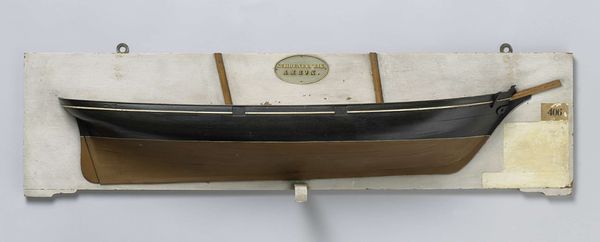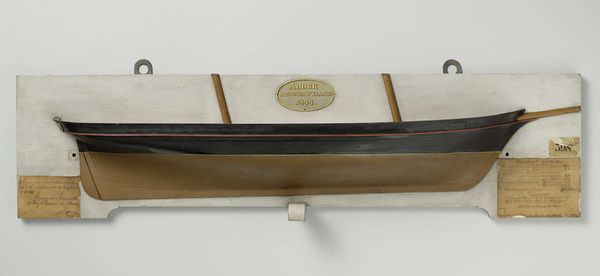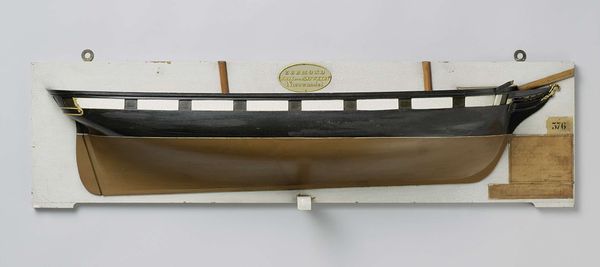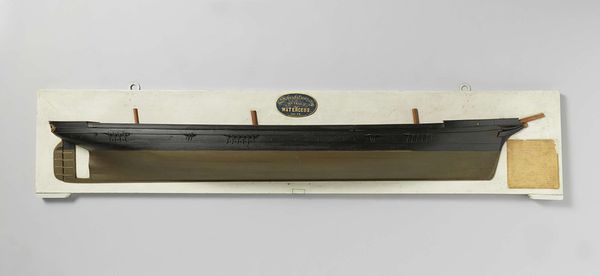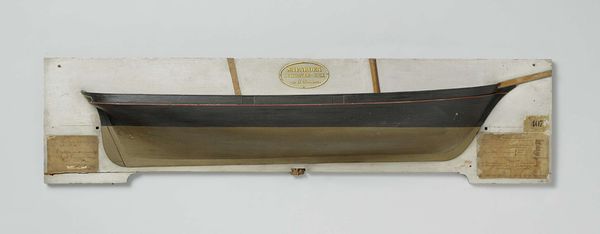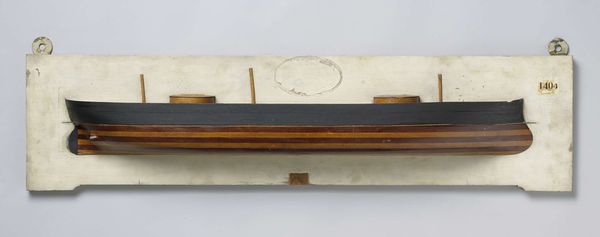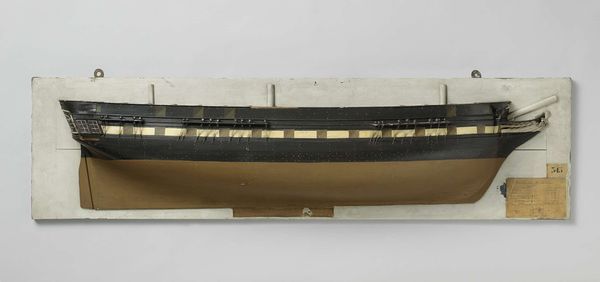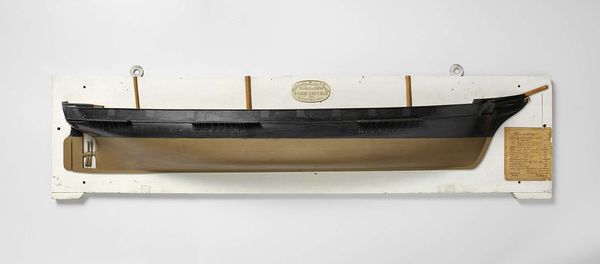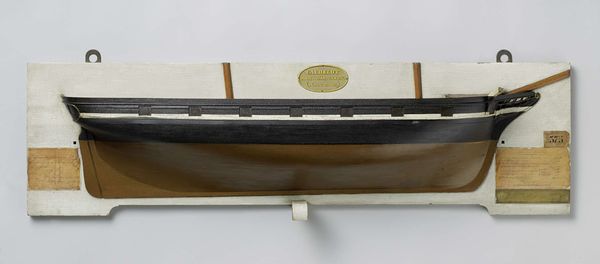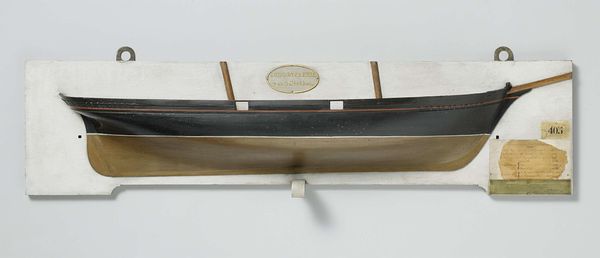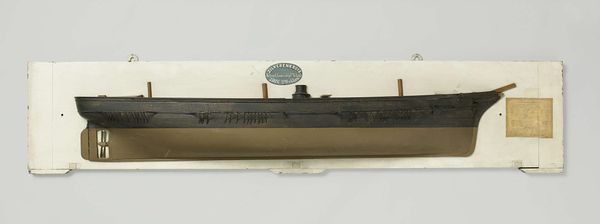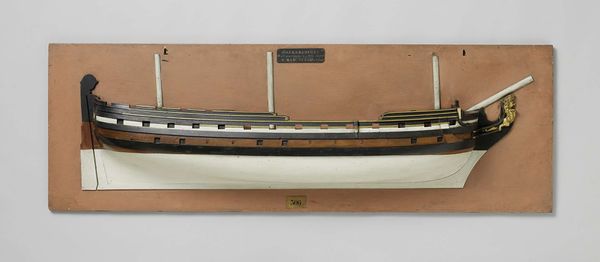
sculpture, wood
#
sculpture
#
wood
#
realism
Dimensions: height 32.5 cm, width 148.5 cm, depth 15 cm
Copyright: Rijks Museum: Open Domain
Curator: This is a "Half Model of a Screw Steamer," crafted from wood between 1857 and 1860 by Rijkswerf Amsterdam. It exemplifies a wonderful combination of sculpture and realistic design. What are your initial thoughts? Editor: It’s immediately striking—stark in its presentation, but elegant. There is an industrial coldness to it as well, maybe representing labor under modernization, a society in transition. The use of only a few tones accentuates the geometry. Curator: Precisely! Focusing on materiality, we see how the artist manipulated the wood to capture the vessel's sleek design. Consider the societal conditions: these models would be crucial for shipbuilders—communicating a vision that will soon carry labor and cargo across water. Editor: And we cannot ignore the era! The mid-19th century was ripe with technological and colonial advancement, facilitated through ships like this. To discuss production then demands reflection upon broader societal and political landscapes defined by power dynamics, trade routes and, the realities of who gained and lost within it. Curator: Absolutely. The very creation and consumption of the Screw Steamer highlight the complex nexus of social change—capitalism, industrialism, colonialism all wrapped up in its timber bones! It also speaks to skill. Look at how a utilitarian object, the wood, transcends to become, in part, art! Editor: Indeed, it demands we acknowledge the often unrecognized craftsmanship inherent in its making—it is labor refined into aesthetic expression that is easily glossed over. Furthermore, considering its period we need to acknowledge how gender was involved: Did it create opportunities? Or reproduce existing power structures? Curator: Good question—likely a reproduction of structure. We see now not only craft but history, and economics… a complex layering that reveals a lot about the nineteenth century's means, motivations, and ambitions. Editor: I appreciate how exploring its origins helps unearth so much; it challenges my perspectives about not just art but broader humanity. Curator: Agreed. The blend of precision and practicality, I find, brings together multiple facets of this intriguing period. Editor: And prompts continued critical exploration. Thank you.
Comments
No comments
Be the first to comment and join the conversation on the ultimate creative platform.
